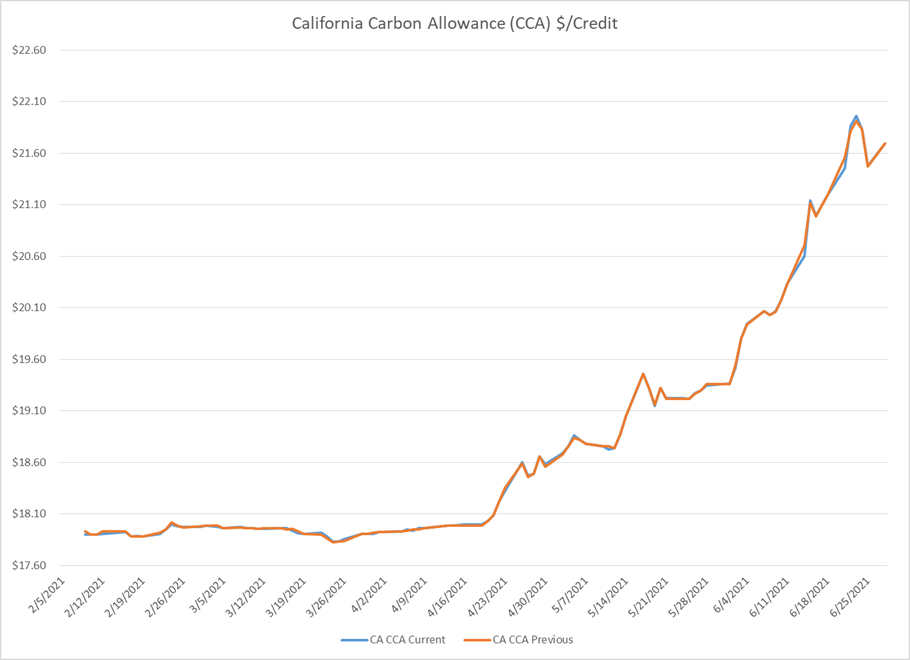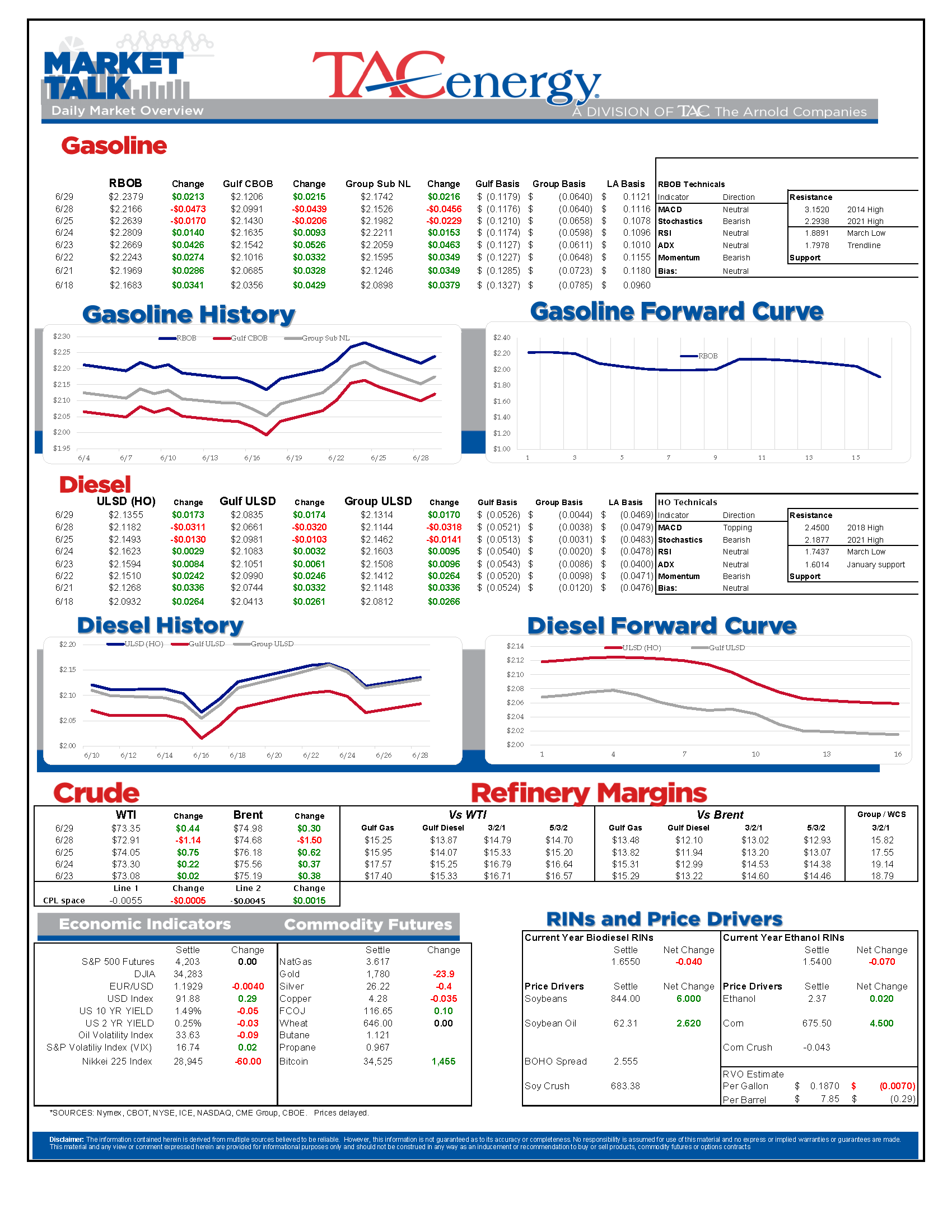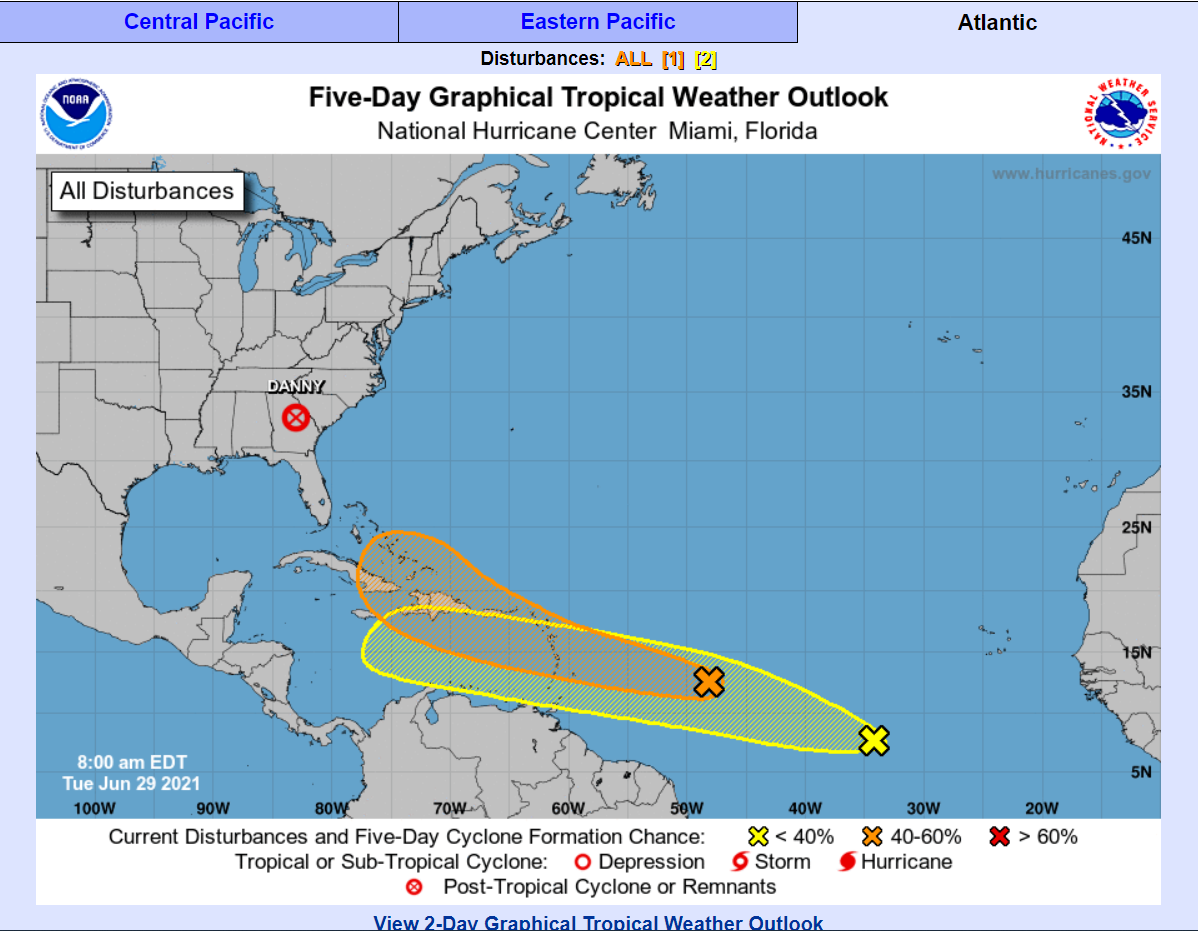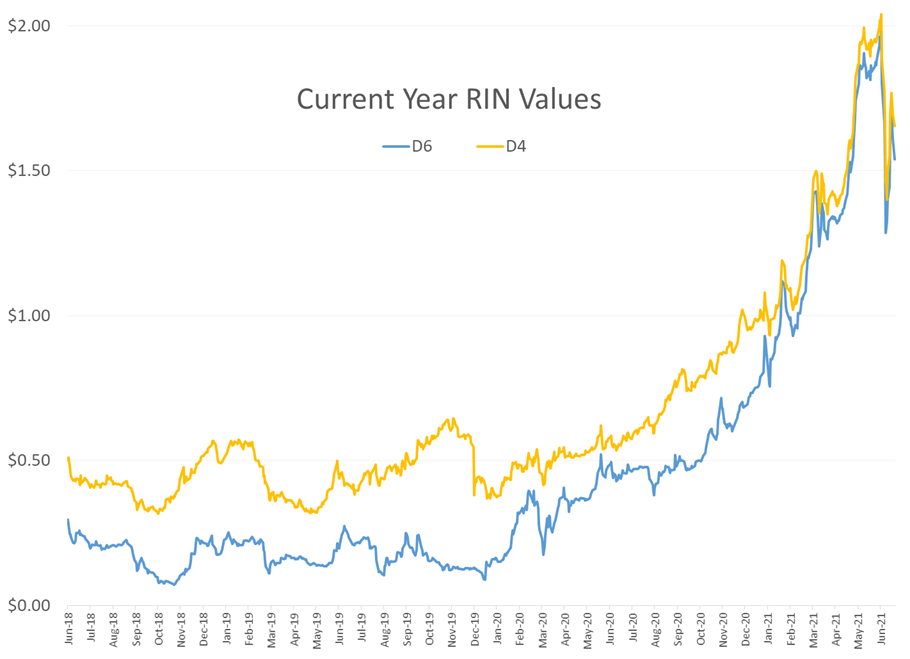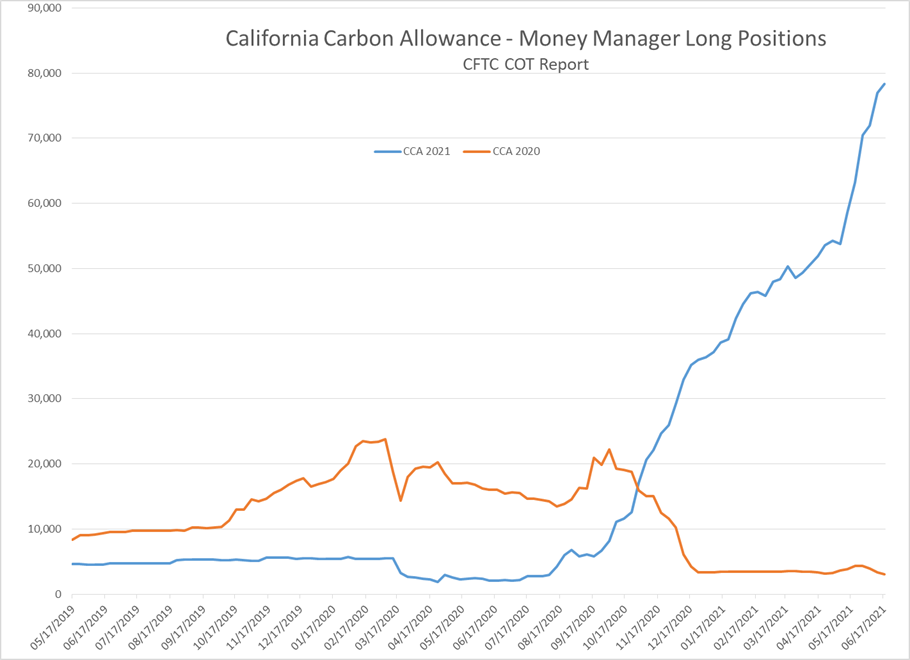Energy Prices Bounce After Worst Daily Selloff In A Month

Energy prices are bouncing after their worst daily selloff in a month Monday, keeping the door open for an extended price rally.
New travel restrictions in a handful of countries due to COVID case spikes took some of the blame for Monday’s sell-off, although from a technical perspective the complex was due for a pullback after the bull rally has pushed prices to multi-year highs. Today’s bounce keeps the trend lines intact, so it’s too soon to say that the rally is over, and those calling for oil prices to reach $80-$100 this year will see the past two sessions as nothing more than a corrective dip.
Tropical Storm Danny made landfall in South Carolina Monday, and has weakened quickly as it moves inland. Two other storm systems are being monitored, but both look like long shots to get into the Gulf of Mexico and become supply threats.
After last week’s Supreme Court ruling that favored small refinery exemptions to the RFS, the EPA is now on the clock to finalize both the RVO requirements for the year (which are already 6 months past due) and to rule on 50 small refinery waiver requests. Not surprisingly, industry groups are not wasting any time lobbying the EPA to see things their way. RIN values did trade higher Monday from where they left off Friday, making for an unusual divergence between RBOB futures which sold off heavily despite the bounce in RINs. Given the close relationship between the two contracts, that could help explain why RBOB is leading the recovery rally this morning.
It’s worth noting that money managers appear to have made a wrong way bet on crack spreads ahead of that Supreme Court ruling, increasing net length in RBOB and ULSD, while reducing length in WTI and Brent. It’s possible that yesterday’s reaction was an unwinding of that trade when it became clear that the latest ruling would not be bullish on crack spreads, but it’s impossible to say given the limited scope of position data available. It’s just as possible that the bullish stance on crack spreads is a play on the St. Croix refinery closing indefinitely after numerous operational mishaps over the past year.
While the big money funds appear mixed on the outlook for oil and refined products, carbon credits remain a hot bandwagon trade with California Carbon Allowance (CCA) positions seeing an increase in net length (bets on higher prices) by money managers for a 6th straight week, even as prices trade at record highs. Given that climate change has become a dominant headline, it’s not surprising to see an influx in hot money into the few contracts that are easily tradeable, and this phenomenon could continue creating volatile swings, similar to what we’ve seen with RINs over the past decade.
Today’s interesting read: How a Salt Lake refinery is using salt to make safer, cleaner, alkylate.
Click here to download a PDF of today's TACenergy Market Talk.
Latest Posts
Week 16 - US DOE Inventory Recap
Energy Markets Trading Quietly In The Red As Ethanol Prices Rally To Five-Month High
The Struggle For Renewable Producers Continues As A Rapid Influx Of Supply And Crashing Credit Prices Make Biodiesel
After Years Of Backwardation, Diesel Prices Have Slipped Into Contango Over The Past Week
Social Media
News & Views
View All
Week 16 - US DOE Inventory Recap

Energy Markets Trading Quietly In The Red As Ethanol Prices Rally To Five-Month High
Energy markets are trading quietly in the red to start Wednesday’s session after a healthy bounce Tuesday afternoon suggested the Israel-Iran-linked liquidation had finally run its course.
There are reports of more Ukrainian strikes on Russian energy assets overnight, but the sources are sketchy so far, and the market doesn’t seem to be reacting as if this is legitimate news.
Ethanol prices have rallied to a 5-month high this week as corn and other grain prices have rallied after the latest crop progress update highlighted risks to farmers this year, lower grain export expectations from Ukraine, and the approval of E15 blends this summer despite the fact it pollutes more. The rally in grain and renewables prices has also helped RIN values find a bid after it looked like they were about to test their 4-year lows last week.
The API reported small changes in refined product inventories last week, with gasoline stocks down about 600,000, while distillates were up 724,000. Crude oil inventories increased by 3.2 million barrels according to the industry-group estimates. The DOE’s weekly report is due out at its normal time this morning.
Total reported another upset at its Port Arthur refinery that’s been a frequent flier on the TCEQ alerts since the January deep freeze knocked it offline and damaged multiple operating units. This latest upset seems minor as the un-named unit impacted was returned to normal operations in under an hour. Gulf Coast basis markets have shrugged off most reports of refinery upsets this year as the region remains well supplied, and it’s unlikely we’ll see any impact from this news.
California conversely reacted in a big way to reports of an upset at Chevron’s El Segundo refinery outside of LA, with CARBOB basis values jumping by more than a dime. Energy News Today continued to show its value by reporting the upset before the flaring notice was even reported to area regulators, proving once again it’s ahead of the curve on refinery-related events. Another industry news outlet meanwhile struggled just to remember where the country’s largest diesel seller is located.
Click here to download a PDF of today's TACenergy Market Talk

The Struggle For Renewable Producers Continues As A Rapid Influx Of Supply And Crashing Credit Prices Make Biodiesel
The sigh of relief selloff continues in energy markets Tuesday morning, with gasoline prices now down more than 20 cents in 7 sessions, while diesel prices have dropped 26 cents in the past 12. Crude oil prices are within a few pennies of reaching a 1 month low as a lack of headlines from the world’s hot spots allows some reflection into the state of the world’s spare capacity for both oil and refined products.
Gasoline prices are trading near a 6-week low this morning, but still need to fall about another nickel in order to break the weekly trendline that pushed prices steadily higher since December. If that trend breaks, it will be safer to say that we saw the end of the spring gasoline rally on April 12th for the 2nd year in a row. Last year RBOB futures peaked on April 12 at $2.8943 and bottomed out on May 4th at $2.2500. The high (at this point) for this year was set on April 12th at $2.8516, and the low overnight was $2.6454.
It’s not just energy commodities that are seeing an unwind of the “flight to safety” trade: Gold prices had their biggest selloff in 2 years Monday and continue to point lower today. Just how much money poured into commodities in the weeks leading up to the direct confrontation between Israel and Iran is unclear, but we have seen in year’s past that these unwind-events can create a snowball effect as traders can be forced to sell to cover their margin calls.
Supply > Demand: The EIA this morning highlighted the record setting demand for natural gas in the US last year, which was not nearly enough to offset the glut of supply that forced prices to a record low in February. A shortage of natural gas in Europe was a key driver of the chaotic markets that smashed just about every record in 2022, and an excess of natural gas supply in Europe and the US this year is acting as a buffer, particularly on diesel prices.
The struggle for renewable producers continues as a rapid influx of supply and crashing credit prices make Biodiesel, RD and SAF unprofitable for many. In addition to the plant closures announced in the past 6 months, Vertex Energy reported Monday it’s operating its Renewable Diesel facility in Mobile AL at just 50% of capacity in Q1. The truly scary part for many is that the $1/gallon Blender's tax credit ends this year and is being replaced by the “Clean” Fuel production credit that forces producers to prove their emissions reductions in order to qualify for an increased subsidy. It’s impossible to say at this point how much the net reduction will be for domestic producers, but importers will get nothing, and at current CI values, many biodiesel producers may see their “blend credit” cut by more than half.
Click here to download a PDF of today's TACenergy Market Talk.
